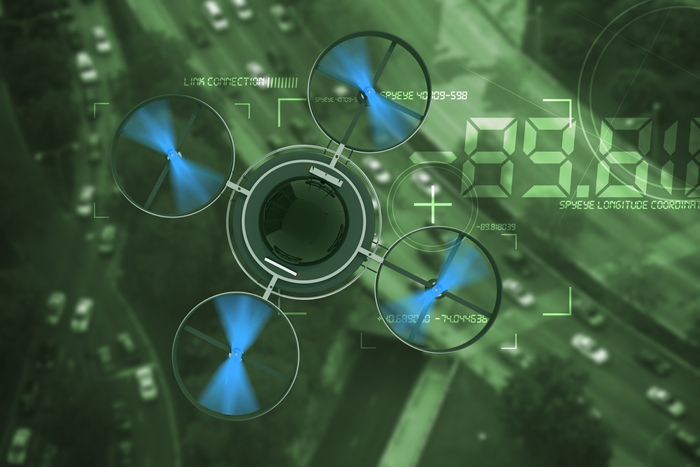Drones have become a universal frenzy. Until recently, they were linked to military use – aircraft controlled from an American base and capable of dropping bombs on the other side of the world. But today, drones also have dozens of commercial uses, and that has attracted the interest of companies, developers and users. According to a report from Business Insider Intelligence, 12% of the 98 billion dollars of planned spending on drones until 2023 will be for purely commercial purposes.
This momentum has encouraged many businesses and governments to think about unmanned aircraft as tools for transportation of packages, fire prevention, rescue people in the mountains or at sea, the study of agriculture, the search for archaeological remains , border control, monitoring of sporting events, delivering medicines to remote areas, recording aerial images for media products, etc. Hence, the near future will be based on two major advances: the launch of app stores for developers, and the development of aircraft connected to the Internet, managed with a smartphone, a tablet or virtual reality glasses.
Erle Robotics, the first store of apps just for drones
A special case of an ambitious startup within the drones sector is Erle Robotics, a company founded by two brothers who are passionate about technology and robotics, David and Víctor Mayoral. “We wanted to use technology to solve problems in practical scenarios, but most projects cost more than 10,000 euros,” says Víctor. So they decided to create their own robotic platform based on the open source operating system Linux, allowing developers to create their own designs.
The goal of these two entrepreneurs was to create a computer able to fly and incorporating all the features you would like to add. That’s how they came up with the idea of launching an app store only for drones. “This project has long been on the minds of those who are dedicated to this field,” says Víctor. “A marketplace where anyone can download a new behavior for his robot,” explains the young expert.
The Mayoral brothers’ dream is to ultimately have an app store where developers can post their projects so other users can download them easily and apply them to their flying computers, therefore contributing to the development of drones connected to the Internet, or the so-called Internet of Things (IoT). For that reason, David and Víctor have joined forces with Canonical, an international software solutions company in Ubuntu, and the Open Source Robotics Foundation.
Applications for drones in the marketplace
Erle Robotics already offers several apps that allow to operate with the Erle-Brain peripherals, the brain for drones (an autopilot system) designed by the Mayoral brothers. What can you do with these applications? Turn lights on and off, make sounds, control motors… Today, anybody interested in creating drones and connecting them to the IoT can purchase the Linux brain made by David and Víctor and start developing his own robotic project.
They have two other projects in the app store, the Erle-Copter, a homemade drone which can carry from temperature or humidity sensors to high definition cameras, and Erle-Plane, a bigger drone with WiFi connection which can be controlled through any mobile device and with greater autonomy (it has a battery life of 40 minutes). It runs on Linux, like all other projects launched by the Mayoral brothers. Right now the company doesn’t have a public interface, and it’s only for developers.
“Making the IoT and drones converge in a single open platform will be a great advantage for entrepreneurs, developers and manufacturers. It will allow to concentrate efforts in just one platform, to share code, making it easier to transform an application for a robot that flies for one that goes underwater,” says Víctor, wishing that his project is just the embryo of a global movement.
Parrot, a drone king connected to the IoT
One of the undisputed giants in the field of connected drones is French company Parrot, a multinational in the field of unmanned aircraft for civilian use. With 850 employees worldwide, it gained 244 million euros in 2014, representing a 4% increase over the previous year. Drones already provide 34% of Parrot’s revenue, especially due to the rise of their civilian use.
The company currently offers two models that are among the most sold in the world: the Parrot Bebop, an all-terrain that can be handled comfortably with a tablet or FPV (virtual reality) glasses for unmanned flight systems. It also has the AR Drone, which can be managed via a mobile device. Its version 2.0 can be controlled using a WiFi connection and a GPS, allowing the drone to create maps of motion and to return to the same takeoff point without the intervention of a person during the flight.
Parrot also has its own app store for drones.
The future of drones and the IoT
The goal is to have drones capable of measuring in real time and in motion (without the need of fixed sensors) any situation. One of the leading companies in the field of drones, IoT and data is DroneDeploy, which offers software solutions to use these unmanned devices as spearheads of Big Data. Their systems automate the flight, collect data and process it. They don’t make drones; they just provide the software needed to add them new dimensions.
The hardware DroneDeploy’s CoPilot is connected to the telemetry port of the drone’s flight controller, and once the journey begins it starts to capture data and store it in the cloud. It also processes the same data on any mobile device (smartphone, tablet or laptop) chosen by the user. Besides, the software automatically fixes any possible problem in the capture of images (it can adjust the focus if more definition is needed.) Another feature is that the software can be used to manage an entire fleet of drones. If you are an agricultural company, for example, and want to map hundreds of hectares of crops with several drones at the same time, getting images and videos in real time and storing everything in the cloud, this can be a useful solution.
If you are interested in reading more about how to fly your drome, check out The Ultimate Guide.










